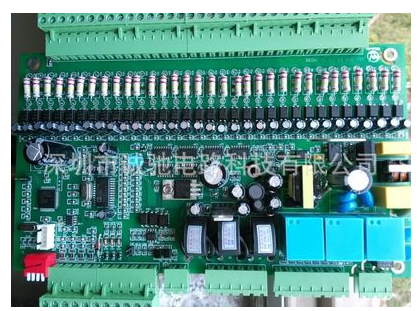Before designing a multi-layer PCB circuit board, the designer needs to first determine the circuit board structure used according to the circuit scale, circuit board size and electromagnetic compatibility (EMC) requirements, that is, to decide whether to use 4 layers, 6 layers, or More layers of circuit boards. After determining the number of layers, determine where to place the internal electrical layers and how to distribute different signals on these layers. This is the choice of multilayer PCB stack structure. The laminated structure is an important factor that affects the EMC performance of the PCB board, and it is also an important means to suppress electromagnetic interference.
The choice of the number of layers and the principle of superposition
There are many factors to consider when determining the laminated structure of a multilayer PCB. From the perspective of wiring, the more layers, the better the wiring, but the cost and difficulty of board manufacturing will also increase. For manufacturers, whether the laminated structure is symmetrical or not is the focus that needs to be paid attention to when PCB boards are manufactured, so the choice of the number of layers needs to consider the needs of all aspects to achieve the best balance.
For experienced designers, after completing the pre-layout of the components, they will focus on the analysis of the PCB wiring bottleneck.

Combine with other EDA tools to analyze the wiring density of the circuit board; then synthesize the number and types of signal lines with special wiring requirements, such as differential lines, sensitive signal lines, etc., to determine the number of signal layers; then according to the type of power supply, isolation and anti-interference The requirements to determine the number of internal electrical layers. In this way, the number of layers of the entire circuit board is basically determined.
After determining the number of layers of the circuit board, the next task is to rationally arrange the order of placement of the circuits of each layer. In this step, the main factors that need to be considered are the following two points.
(1) The distribution of special signal layers.
(2) Distribution of power layer and ground layer.
If the PCB circuit board has more layers, the more types of special signal layers, ground layers, and power layers are arranged and combined. The more difficult it is to determine which combination is the best, but the general principles are as follows.
(1) The signal layer should be adjacent to an inner electric layer (internal power/ground layer), and the large copper film of the inner electric layer is used to provide shielding for the signal layer.
(2) The internal power layer and the ground layer should be tightly coupled, that is, the thickness of the medium between the internal power layer and the ground layer should be a smaller value to increase the capacitance between the power layer and the ground layer and increase the resonance frequency . The thickness of the medium between the internal power layer and the ground layer can be set in Protel's Layer Stack Manager. Select [Design]/[Layer Stack Manager…] command, the system pops up the Layer Stack Manager dialog box, double-click the Prepreg text with the mouse, and a dialog box pops up. You can change the thickness of the insulating layer in the Thickness option of the dialog box.
If the potential difference between the power supply and the ground wire is not large, a smaller insulating layer thickness, such as 5mil (0.127mm), can be used.
(3) The high-speed signal transmission layer in the circuit should be a signal intermediate layer and sandwiched between two inner electrical layers. In this way, the copper film of the two inner electric layers can provide electromagnetic shielding for high-speed signal transmission, and at the same time, it can effectively limit the radiation of the high-speed signal between the two inner electric layers without causing external interference.
(4) Avoid two signal layers directly adjacent to each other. It is easy to introduce crosstalk between adjacent signal layers, resulting in circuit function failure. Adding a ground plane between the two signal layers can effectively avoid crosstalk.
(5) Multiple grounded internal electrical layers can effectively reduce grounding impedance. For example, the A signal layer and the B signal layer use separate ground planes, which can effectively reduce common mode interference.
(6) Taking into account the symmetry of the layer structure.
Commonly used stack structure
The following uses an example of a 4-layer board to illustrate how to optimize the arrangement and combination of various PCB laminate structures.
For commonly used 4-layer boards, there are several stacking methods (from top to bottom).
(1) Siganl_1 (Top), GND (Inner_1), POWER (Inner_2), Siganl_2 (Bottom).
(2) Siganl_1 (Top), POWER (Inner_1), GND (Inner_2), Siganl_2 (Bottom).
(3) POWER (Top), Siganl_1 (Inner_1), GND (Inner_2), Siganl_2 (Bottom).